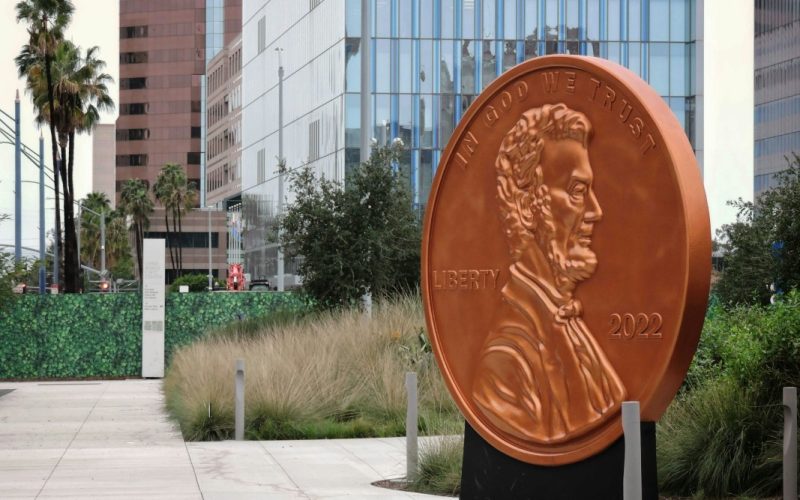President Donald Trump issued a directive to the U.S. Treasury to cease the production of new pennies, citing the staggering financial losses incurred by their continued minting. According to the U.S. Mint’s latest report, the federal government lost $85.3 million in the 2024 fiscal year alone producing nearly 3.2 billion pennies—coins that now cost more to make than they’re worth. This decision marks a significant shift in U.S. monetary policy and raises questions about the future of the penny, its cultural significance, and the broader implications for the economy.
This article dives into the reasons behind this decision, explores the history of the penny, examines public sentiment, and considers what might replace it—or whether we’ll simply adapt to a penny-less society.
Why Is the Penny So Expensive to Make?
The primary reason for halting penny production is simple economics: it costs far more to produce a penny than the coin is actually worth. In the 2024 fiscal year, each penny cost approximately 2.7 cents to manufacture, transport, and distribute—a figure that has steadily risen over the years due to rising material and operational costs.
- Material Costs : Pennies are made from zinc (97.5%) with a thin copper coating. The price of zinc has surged in recent years due to global supply chain disruptions and increased demand in industries like construction and automotive manufacturing.
- Operational Expenses : Running the U.S. Mint facilities requires significant resources, including energy, labor, and machinery maintenance. These fixed costs add up quickly when producing billions of coins annually.
For decades, critics have argued that continuing to mint pennies is an inefficient use of taxpayer dollars. With inflation eroding the purchasing power of the penny, many transactions now round to the nearest nickel anyway, further diminishing its practical utility.
A Brief History of the Penny
The penny has been a staple of American currency since 1793, when the first one-cent piece was introduced under George Washington’s presidency. Over time, the design and composition of the penny evolved:
- Early Designs : Early pennies were large, made entirely of copper, and featured iconic imagery like Lady Liberty.
- Shift to Zinc : In 1982, the U.S. Mint switched from pure copper to a zinc-based alloy because copper had become too expensive. Today’s pennies contain only 2.5% copper.
Despite its long history, the penny’s relevance has dwindled as cashless payments via credit cards, mobile apps, and cryptocurrencies have gained popularity. Many Americans no longer carry change, let alone worry about counting out exact cents.
Public Reaction to the Decision
President Trump’s directive has sparked a mix of reactions across the country. Some view it as a pragmatic step toward fiscal responsibility, while others see it as an attack on tradition.
Supporters of Eliminating the Penny
- Economic Efficiency : Advocates argue that eliminating the penny will save taxpayers millions annually and streamline commerce. Retailers already round prices to the nearest five cents in most cashless transactions, so removing the penny wouldn’t disrupt everyday life significantly.
- Environmental Benefits : Producing billions of pennies consumes vast amounts of zinc and copper, contributing to environmental degradation. Halting production could reduce mining activity and conserve natural resources.
- Precedent Elsewhere : Several countries, including Canada, Australia, and New Zealand, have successfully eliminated their lowest-denomination coins without major issues. Their experiences suggest that phasing out the penny could be relatively seamless.
Critics of the Move
- Cultural Significance : For many Americans, the penny holds sentimental value. Iconic designs like the Lincoln Memorial and the Union Shield evoke patriotism and nostalgia. Critics fear losing the penny would erase part of America’s cultural heritage.
- Impact on Charities : Organizations like the Leukemia & Lymphoma Society rely heavily on penny drives and small-change donations. Removing the penny could hurt fundraising efforts for such causes.
- Concerns About Rounding Up : Some worry that rounding prices to the nearest nickel could lead to subtle price increases, disproportionately affecting low-income households who still rely on cash.
What Happens Next?
If the Treasury follows through on Trump’s directive, several steps must occur before the penny officially disappears:
- Legislative Approval : Congress may need to pass legislation authorizing the elimination of the penny. Lawmakers will likely debate the issue extensively, weighing economic benefits against cultural concerns.
- Transition Period : To avoid confusion, the government would likely implement a gradual phase-out. Banks and businesses would need time to adjust systems for cash registers, vending machines, and parking meters.
- Potential Replacement : While no immediate plans exist to introduce a new coin, some experts suggest replacing the penny with a smaller, cheaper alternative—perhaps made from recycled materials or even plastic.
- Impact on Collectors : Numismatists (coin collectors) could see a surge in interest in existing pennies, particularly rare editions. Prices for collectible pennies might rise as circulation declines.
Broader Implications for the Economy
Eliminating the penny could have ripple effects throughout the economy:
- Cash Transactions : Without pennies, retailers would round prices to the nearest nickel. Studies show this typically balances out over time, but short-term adjustments could cause minor inconveniences.
- Inflation Concerns : Critics argue that rounding up prices could contribute to inflation. However, evidence from countries that eliminated low-value coins suggests any impact would be negligible.
- Digital Payments : The decline of physical currency aligns with the growing dominance of digital payment methods. Phasing out the penny could accelerate the transition to a fully cashless society.
President Trump’s directive to halt penny production reflects a bold attempt to address inefficiencies in U.S. monetary policy. While the penny remains a beloved symbol of American culture, its practical value has diminished dramatically in recent decades. By eliminating the penny, the U.S. could save millions annually, reduce environmental harm, and modernize its approach to currency.
However, the decision also raises important questions about tradition, equity, and the role of physical money in an increasingly digital world. As lawmakers and citizens weigh the pros and cons, one thing is clear: the penny’s days may be numbered, but its legacy will endure in debates about progress versus preservation.





